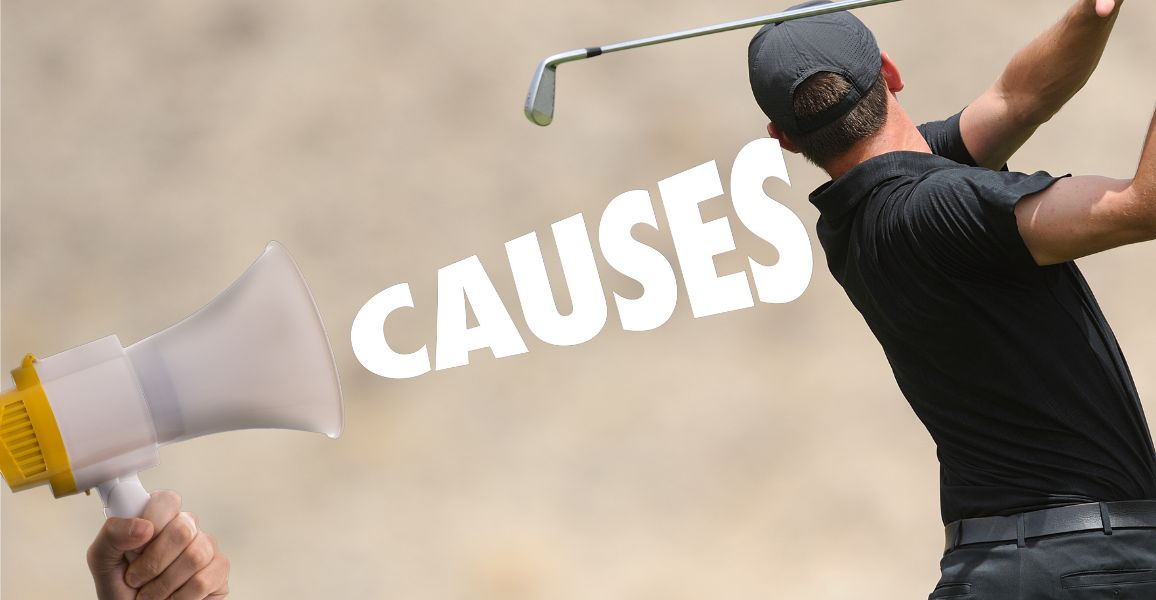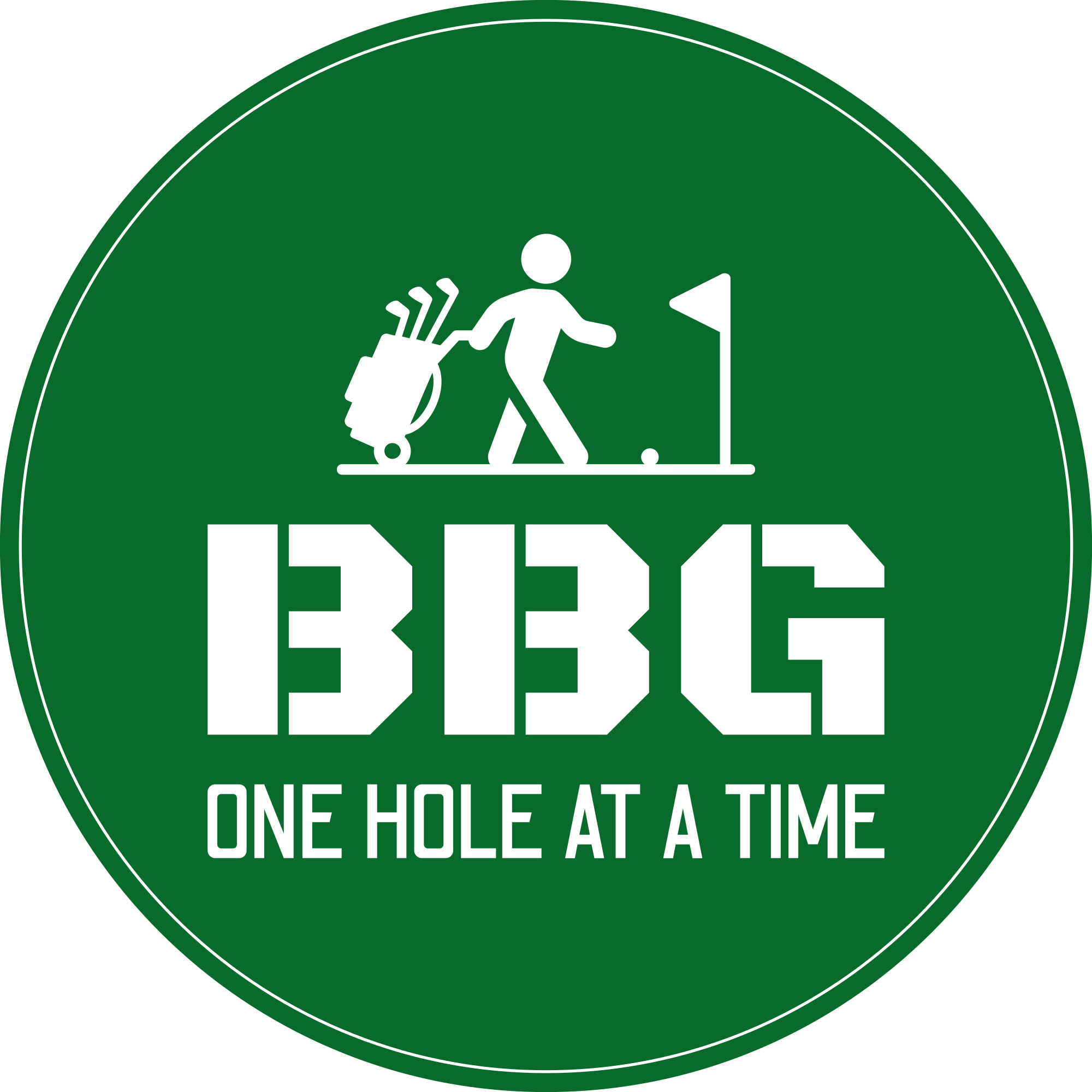If you’re a fader, you don’t mind if you over-fade it. But if you hit a double-cross, this is a hard thing to put out of your mind for the rest of the day. – Chamblee
A double cross is when a golfer aims to play a particular shot, and the opposite happens.
So, if you’ve ever set up to play a fade off the tee, but the ball has then drawn/hooked in the opposite direction, guess what…
You’ve been double-crossed!
The phrase “double cross” was initially used in sports to describe when a boxer is paid money to lose a fight but then goes out and wins.
They took the money, won the fight, and double-crossed whoever paid them to dive.
In golf, it’s different because nobody is paying you money to hit a bad shot.
(If you know somebody paying golfers money for foul shots, give them my number!)
No, you betray yourself in golf, which is one of the most annoying shots you can hit. It’s almost as bad as chunking it.
By the end of this post, you will know what is causing your double cross and how to fix it.
What Causes A Double Cross

Your Swing Path Is Off
Your swing path could be the reason for your double cross.
A swing path is the direction your club head is traveling as it hits your golf ball.
For example, imagine a traditional clock face.
An in-to-out swing path would be when you draw a line going from 7 – 1 (Draw).
An out-to-in swing path would be when you draw a line from 5 – 11 (Fade).
A flush swing path would be when you draw a line from 6 – 12 (Straight).
It can be tricky to fix, but it’s doable and might just take a few range sessions.
So you may be aiming right, hoping for a draw from an in-to-out swing, but you had an out-to-in swing path.
Now your ball has faded or sliced in the opposite direction, leaving you in trouble and questioning why you even play golf.
Not Rotating Through The Ball Properly
More often than not, if you experience a double cross, it’s to do with your upper and lower bodies not rotating in sync together through impact.
For example, if your lower body rotates faster than your upper body, this can cause your club face to open and result in a shot that goes way right off your target line.
On the flip side, when your upper body travels faster than your lower body, it closes the club face and will push your ball out to the left of your intended target.
This is why it’s crucial for accuracy and power/distance that you rotate your body in sync to avoid a double cross.
Not Shifting Your Weight Properly
Once again, the key to consistent golf shots is moving your body in sync.
If you slice the ball or hook, the ball will tell you your issue with shifting your weight.
For golfers who tend to produce a hook for their double cross, it could mean you’re shifting your weight too soon during your downswing.
Resulting in your body and clubhead closing for impact, producing a draw or hook.
Now, if you’re a golfer who struggles with a slice, the opposite is happening.
Meaning you’re not shifting your weight off the backfoot in time.
This means your body and club head will be open for impact, causing a fade or slice.
Not ideal at all!
Your Club Face Could Be Open… Or Closed
Even if you do everything right regarding your golf swing, an open or closed club face will still send your ball further left or right of the target line.
For example, if your club face is closed at the impact, it will produce a draw bias.
The opposite happens if the club face is left open at impact, producing a fade bias.
What’s the main culprit of lousy clubface control?
Your Wrists Are Realsing Too Early Or Too Late
Timing your wrist release at the right time is important when striking the ball.
Your release is the biggest cause of your club’s being too open or closed.
When you release your wrists too early, it means the club head will get ahead of your hands, closing the clubface and resulting in hooks/pulls.
Then, if you release them too late, the club head gets left behind your hands, leaving it with an open face and causing a big old slice.
Ball Position
Having your ball too far back or forward could be why you keep getting hit with the double cross.
Luckily for you, this is the most straightforward potential cause to fix.
Basically, if you’ve got the ball further back in your stance, it will encourage a draw or snap hook because your club face won’t have the room to square up perfectly.
Similarly, if the ball is further up in your stance, it will encourage a fade or slice, as the club face will be too open.
So if you’re trying to hit a fade, having the ball too far back can cause a hook, and yep, you guessed it…
Double-crossed again!
How To Fix A Double Cross in Golf

Rotate All The Way Through
Work on better rotation during your next practice session on the range; before you know it, you’ll hit the ball more consistently.
To do this, imagine you have a timber plank that’s looped through your belt up your back.
Focus on rotating your hips and upper body together.
While doing this, you shouldn’t worry about where the golf balls end up.
The only goal here is to develop that feel so you can rotate better on the course when needed.
Adjust Your Grip
Adjusting your grip slightly could be the quick fix you’re looking for.
Let’s say your double cross is typically caused by an unwanted draw or snap hook, and then you can easily adjust your hand position to fix it.
To do this, you want to bring whatever hand is closer to your trail foot and move it around so it feels more on top of your grip.
You’ll know you’ve done it right if you can see more knuckles than before for this hand.
This hand position will stop your club face from closing on impact, which causes a draw.
To fix a fade, just do the opposite by moving that same hand so it feels below your grip, which will help you avoid slicing the ball with an open club face.
Practice Shifting Your Weight Properly
This drill is easy and can be done between shots or during your next range session.
All you have to do is swing the club as you normally would.
But as you start your backswing, you should lift your lead foot so that you’re almost standing on your toes.
This will force you to shift your weight onto the back foot.
Now, as you begin your downswing, you should push off your back foot, which will force more weight on your front foot, which will bring it flat to the ground again.
The aim of this drill isn’t about hitting the ball straight.
You can even do the drill without a golf ball if you like.
This drill aims to help you feel better when shifting your weight.
Stop Trying To Shape Shots Every Hole
Better players who have mastered the game enough to be able to hit fades or draws on demand can become victims of their own success.
When golfers shape shots too often, they open themselves for a big, dirty double cross.
On the first hole, they hit a fade, on the second hole, they try play a draw, and then on the third, they try play a fade, and it goes the opposite direction.
It’s bound to happen at some stage, as the saying goes, “Play stupid games, Win stupid prizes”.
They seem to have forgotten that the pros don’t even shape shots all the time.
Most of the time, they play their stock shot on every hole they can.
Only when their stock shot can get them in trouble will they try something else, and even then, they will still consider sticking to what they know best.
Fix Your Swing Path
Remember what you’re trying to accomplish with your golf swing to avoid the double cross in golf.
When trying to hit a fade, you almost want to feel like you are slightly slicing across the golf.
When you want a draw, you want to feel like the club is coming from underneath you, pushing out and across the ball.
To practice this, you must go to the driving range and try hitting both shots.
The best way to do this is to exaggerate each of them.
You might be hitting slices or hooks on the range, but that’s what the range is for.
Once you can hook and slice on command, try toning it back, ideally resulting in more fade or draws.
Now, I’m not suggesting you go to the golf course and try to shape all your shots because even professional golfers don’t do that.
This practice is purely so you know how these shots occur, so the next time you aim right, you’ll know what coming over the top or slicing the ball is and avoid doing that.
Work On Your Takeaway
Your double cross could be caused by how you take your club back on your backswing.
What I mean by this is if you feel like when you take your golf club back, you leave it hanging in front of your body, this could be causing your slice.
When your golf club is too far from your body, you must begin cutting across in the downswing to get it back on track to hit the ball.
Most of the time, this will result in a big slice and a nasty double cross.
If your golf club quickly gets behind your body, the chances of hooking/drawing the golf ball increase.
To fix this position, put a golf ball at the back of your club head as you set up to swing.
As you take the club back, try to roll the golf ball back in a straight line for as long as possible and then swing as usual.
This will help you improve your takeaway.
Try out all the above, and I’m sure you will eliminate the chance of double-crosses in your golf game.
Checkout the below posts, too if you liked this one:
What To Wear Golfing If You Don’t Have Golf Clothes
